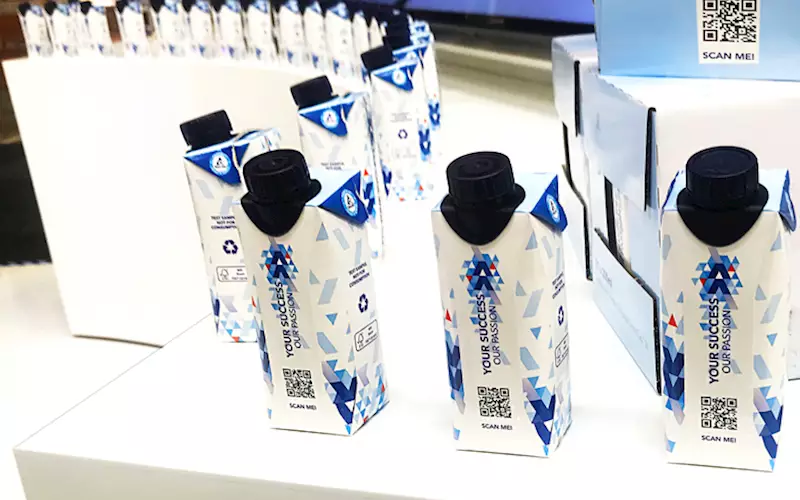Tetra Pak introduces smart packaging in India
Tetra Pak has introduced dynamic QR codes for liquid food packaging in India, which embeds every pack with a unique identity, allowing interaction between manufacturers, brand owners and consumers throughout the lifecycle of the pack.
03 Nov 2018 | By Abhishek Muralidharan
Ashutosh Manohar, managing director, Tetra Pak South Asia, said, “With the rising number of smartphones and internet penetration in the country, India provides a perfect opportunity for smart packaging technology that uses dynamic QR codes. While food safety and traceability, plant productivity and consumer engagement are the most obvious benefits, this technology can be used for many other benefits like sharing information about recycling, what happens to the carton after use etc. The possibilities are endless.”
According to TetraPak, brands will be able to deploy this “revolutionary technology” to not just engage with consumers in a unique and personalised way, but also to understand consumption patterns and unearth deeper consumer insights.
For consumers, this technology allows potential use of augmented reality, real-time promotions, downloadable content and more, making it a more exciting experience.
How does smart packaging work?
The key to the technology is the ability to print a unique digital code on every package. In case of a dynamic QR code, this can be scanned by an ordinary smartphone, allowing all kinds of innovative possibilities:
• With a supply chain that's interlinked from end to end, brands can make traceability more transparent, sharing information with consumer’s right down to the farm that a particular product comes from.
• The package can be the gateway to a consumer engagement programme: a ‘scratch and win’ contest, a unique identifier for an online competition, a loyalty token or a means of creating a one-to-one channel with individual consumers.
• The information flow can be two-way, allowing producers to capture specific, valuable information about their consumers as part of the digital code interaction.
• It can even be used through the post-consumer recycling value chain by providing links to the location of the nearest recycling centre.
“Smart Packaging will not only make the packaging more interactive and act as a medium to create conversations. It will also allow brands to trace each package throughout its lifecycle – from production, through the supply chain, all the way to the consumers, gathering valuable insights along the way, thereby making this a truly transformational technology,” added Manohar.
India will be one of three Tetra Pak markets in the world to have unique PICCO printing technology for printing dynamic QR Codes
TetraPak is set to pilot this technology with two leading F&B brands over the next two to three months.
Dynamic QR codes versus static QR codes
|
Static QR codes |
Smart (dynamic) QR codes |
|
The same code is printed on all packs. The destination website URL is placed directly into the QR code and can’t be modified |
Each dynamic QR code, and therefore each package, is unique because the landing page can be changed multiple times after the QR code has been created |
|
The same code is printed on all packs. The destination website URL is placed directly into the QR code and can’t be modified |
High-level of personalisation is possible for each pack and each consumer |
|
No room for personalisation and limited use for consumer promotions
|
Can be used for different purposes during the journey of the pack. Like traceability (at supply chain level), food safety (during distribution), consumer engagement, validating the authenticity of the pack (once it reaches consumers) and track recycling rates (post-consumer). |
|
Very little flexibility in use, once the code is generated |
Enable real-time consumer promotion, which can keep evolving while the package |











 See All
See All